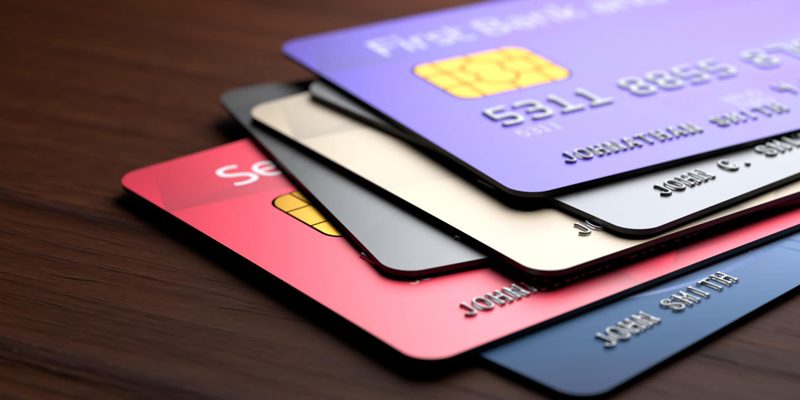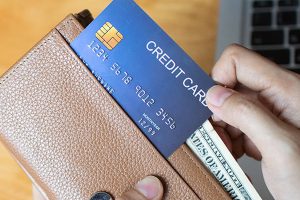Identity theft refers to the fraudulent acquisition and misuse of someone else’s personal information, such as their name, Social Security number, credit card details, or bank account information, without their consent. This stolen information is then used to commit various forms of fraud or deception. Here are some examples of identity theft:
Financial Identity Theft
A thief uses someone’s personal information to open credit card accounts, obtain loans, or make unauthorized transactions, leaving the victim responsible for the debt.
Social Security Identity Theft
Fraudsters use another person’s Social Security number to gain employment, obtain government benefits, or file fraudulent tax returns.
Medical Identity Theft
A thief uses stolen personal information to receive medical treatment, buy prescription drugs, or submit false insurance claims, potentially leading to incorrect medical records and financial liabilities for the victim.
Synthetic Identity Theft
This occurs when a thief combines real and fake information to create a new identity. They may use a legitimate Social Security number with a false name, address, or birthdate to open accounts or apply for loans.
Child Identity Theft
Criminals exploit the clean credit histories of children by using their Social Security numbers to open fraudulent accounts. Since children typically don’t have a reason to monitor their credit, the theft can go unnoticed for years.
Criminal Identity Theft
A thief uses another person’s identity when arrested or questioned by law enforcement, leading to a criminal record associated with the victim’s name.
Tax Identity Theft
Fraudsters file false tax returns using stolen personal information to claim refunds, resulting in the victim’s legitimate refund being delayed or denied.
Driver’s License Identity Theft
Someone uses another person’s personal information to obtain a driver’s license or state identification card, often for illegal purposes.
Social Media Identity Theft
Cybercriminals create fake profiles using stolen photos and personal details to deceive others, spread misinformation, or engage in scams.
Phishing and Email Scams
Scammers send deceptive emails or messages pretending to be from legitimate organizations, asking for personal information or tricking victims into clicking on malicious links, leading to identity theft.
Data Breach Identity Theft
When a company’s database is breached, personal information of customers or employees can be stolen and used for identity theft purposes.
Dumpster Diving
Thieves search through trash or recycling bins to find discarded documents containing personal information, such as bank statements, credit card statements, or tax documents.
Skimming
Criminals use devices to capture credit or debit card information when the card is swiped or inserted into compromised card readers, such as those at ATMs or gas stations.
Mail Theft
Stealing mail from mailboxes or intercepting mail in transit allows identity thieves to gain access to sensitive information like bank statements, credit card offers, or Social Security statements.
How to prevent identity theft?
To prevent identity theft, it’s important to be proactive and take certain measures to safeguard your personal information. such as safeguarding personal documents, regularly monitoring financial accounts, and being vigilant about sharing personal information online, to protect yourself from identity theft. Here are some detailed steps you can take:
Safeguard Personal Documents:
- Keep important documents (e.g., Social Security card, passport) in a secure location, such as a locked drawer or safe.
- Shred documents containing sensitive information before discarding them, especially financial statements, credit card offers, and medical records.
- Store digital copies of essential documents in password-protected and encrypted folders.
Use Strong and Unique Passwords:
- Create strong, complex passwords for all your online accounts, using a combination of letters, numbers, and symbols.
- Avoid using easily guessable information, such as your birthdate or pet’s name, as passwords.
- Use a password manager to securely store and manage your passwords.
Be Cautious with Personal Information:
- Be cautious about sharing personal information online, especially on social media platforms. Limit the amount of personal information you share publicly.
- Verify the legitimacy of websites before entering personal information, especially when making online purchases or providing financial details.
- Be wary of unsolicited requests for personal information via phone, email, or text. Legitimate organizations will not ask for sensitive information through these channels.
Secure Your Devices and Networks:
- Use strong, unique passwords or biometric authentication to protect your devices (e.g., smartphones, laptops) from unauthorized access.
- Install reputable antivirus and anti-malware software on your devices and keep them updated.
- Secure your home Wi-Fi network with a strong password and encryption to prevent unauthorized access.
Be Mindful of Phishing Attempts:
- Be cautious of suspicious emails, messages, or phone calls asking for personal information or urging urgent action.
- Verify the legitimacy of communications by contacting the organization directly using the official contact information (not information provided in the suspicious message).
Monitor Your Financial Accounts Regularly:
- Review your bank statements, credit card statements, and financial transactions frequently for any unauthorized activity.
- Sign up for alerts and notifications from your financial institutions to receive updates on account activity.
Use Two-Factor Authentication (2FA):
- Enable two-factor authentication whenever available, which adds an extra layer of security by requiring a second form of verification (e.g., a unique code sent to your phone) when logging into your accounts.
Regularly Check Your Credit Reports:
- Obtain free credit reports annually from the major credit reporting agencies (Equifax, Experian, and TransUnion) and review them for any suspicious or unauthorized accounts or activity.
- Consider using a credit monitoring service to receive alerts for any changes or inquiries on your credit report.
Protect Your Social Security Number (SSN):
- Keep your SSN confidential and avoid carrying your SSN card in your wallet or purse.
- Only provide your SSN when necessary, and inquire about alternative identification options when possible.
Use Secure Networks and Websites:
- When accessing sensitive information or making online transactions, use secure, encrypted networks (look for “https://” in the website address) and trusted websites.
- Avoid conducting financial or sensitive transactions on public Wi-Fi networks, as they may be insecure and prone to interception.
Be Wary of Mail and Document Security:
- Retrieve mail promptly from your mailbox to minimize the risk of theft.
- Opt for paperless billing and statements whenever possible to reduce the amount of sensitive information received via mail.
Educate Yourself and Stay Informed:
- Stay updated on the latest identity theft techniques and scams.
- Educate yourself about best practices for online safety and privacy.
- Regularly review resources provided by government agencies, such as the Federal Trade Commission (FTC) or the Identity Theft Resource Center (ITRC).


